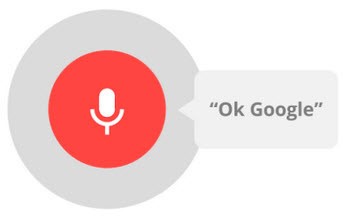The Startup's Guide To Ecommerce In 2018
Startups around the world are poised for a New Year. What challenges and opportunities lie ahead? How will the commercial landscape shift in 2018?
One thing is for sure — consumers are increasingly looking online for all their purchases and decisions. If your startup has decided to make the most of ecommerce in 2018 (wise move), you need to get up to speed (quickly) on how the industry is changing.
From shipping costs to voice search — here is what startups can anticipate from ecommerce in 2018.
Mobile-first, people-first
Mobile commerce is reaching new heights, and with it, messenger marketing is also taking off. Glued to our mobiles, we are happier than ever to interact with chatbots and buy our products directly from social media.
This new era of mobile/social commerce means that brands need to adopt a fully-integrated sales approach. Having a great mobile experience that stretches from your web store to a messenger app will ensure that you’re always ready to make sales.
As consumers continue to research their purchases online and interact with brands on a regular basis (not just when making a purchase), the social kudos of being ‘switched on’ will stand you in good stead. When that crucial conversation starts, make sure your brand is there to join in...
By embracing mcommerce and messenger marketing, your brand will be well-positioned to develop strong customer relationships at a fraction of the cost of traditional marketing methods. After all, are people going to feel more connected to a billboard or TV ad, than their mobile phones?
Personalize, don’t patronize
Getting personal with your customers is a great way to form strong bonds and ties, but it’s important that you don’t become presumptuous. Littering marketing emails and ads with people’s names could backfire.
Too many pushy pop ups and relentless retargeting will have your customers running to the hills and dismissing you as a spammy and desperate brand.
In 2018, it’s important that brands embrace a smarter form of exit intent marketing. You should aim to map ads onto an actual (rather than fictitious) customer journey. Don’t assume — use data to validate your customer journey.
Don’t ask your customers for too much too soon, and don’t make them work hard for things that should be easy. Just because you include someone’s first name in a customer service email, doesn’t guarantee they will have a good time. In fact, empty personalization in emails and on social media are more likely to be turn-offs rather than incentives to engage.
Get ready for voice search
Voice search is here. From Google Home to Alexa and Siri — we are all getting more comfortable with speaking to our devices.

For a new ecommerce brand, it means getting comfortable with natural language, intent, and microdata. You need to be 100% clear on what users can and can’t expect from your store. Attempt to address common objections in copy, and write in a clear and jargon-free way.
You will also need to make the most of localized and location-specific searches, so make sure that you’ve owned all your local business listings. A healthy spread of reviews is another great way to improve local search prominency.
What consumers want from ecommerce brands
Consumers can be a tricky breed to please —- when you treat them as such. As important as it is to stay on top of consumer trends, reducing your customers to facts and stats on a business report is no way to start a productive relationship. In fact, it’s almost certainly a recipe for failure.
Ecommerce brands should be mixing data insights with a hefty side of people skills and common sense in order to craft customer experiences customers actually want.
Here are some of the current branding priorities that any new players need to take note of:
- The move towards short-form video content and other forms of video marketing has been gathering steam over the past few years, so shift your content production in this direction to keep your brand fresh
- Quality all-round content and copywriting are must-haves — anything less will devalue your brand and make it look and feel sloppy
- Recent brand faux pas and tone deaf commercials have left people feeling cynical about brands’ ability to really care (Pepsi, Cinnabon — need we say more). New brands need to tap into the current cultural mood and zeitgeist, not work against it.
Here’s an example of a brand who know they are, and are who their customers want them to be:
Chubbies sell shorts — but they really sell so much more than that! They sell an attitude and a lifestyle that’s fun and daring. Their ability to connect with their customers hinges on a clear brand voice that never falters or fails.

An irreverent brand voice shouldn’t be out of reach even in the B2B market (after all, wouldn’t a bit of humor spice up those dental chair ads?). Humor is a great way to make a generic product more fun, and it’s a subtle, yet compelling, way to add user value to your products.
How to diversify into ecommerce
Ecommerce shouldn’t just be an option for obviously product-led businesses — it’s now easier than ever to productize knowledge, software, and online content. Explore ecommerce as a way to generate passive, reliable income for your business.
Here are just some simple ways to make ecommerce work for you:
- Create an ebook from all the blog posts you’ve written over the past year
- Develop a web app and sell your services with an ecommerce model
- Create online content assets and get people to pay a small subscription fee to access them
- Create and monetize an online course
- Sell one-to-one coaching calls and workshops online.
Don’t let shipping weigh you down
Shipping is not the first thing that comes to mind when you say ecommerce — but it should be. Shipping is a crucial customer experience factor, and poor shipping can damage your brand and eat into your profit margins.
Not only do you have to contend with shipping, but then come the taxes. If you’re like me and don’t like math, then it’s a wise idea to invest in inventory and data management systems that can help automate and simplify the whole process for you.
One easy way to deal with shipping? Offer free shipping and absorb the costs in your profit margins. Work with regional centers for faster delivery times, or go hands-off and opt for the no-hassle dropshipping model. (I say no hassle, but some delivery lead times can be quite long if your suppliers are abroad).
Shipping can be a headache, so I recommend investing in quality apps and plugins to help you navigate the high seas of shipping.
Don’t forget that packaging is an important customer experience consideration as well. Whether you go simple and sustainable, or luxury and elaborate — your packaging will say a lot about your brand.
Easier ways to get off the ground
As a start up, budgets are likely to be stretched. There are some easy ways to help you get to market faster:
- Find an investor who believes in your product and brand (getting venture capital has never been easier)
- Run a crowdfunding campaign and build a community first, a brand second
- Buy an existing website and tweak it so that it suits your vision
- Experiment with a few products on Amazon first to road test your ideas
- Partner with an existing brand and take things slow, or share the costs
- Set up shop on Etsy or Ebay and have a go at shifting some product first whilst leaning on the marketplace structure
- Go to market trade shows with an early prototype and generate pre-launch hype.
Investing in ecommerce in 2018 is a sound choice, but it’s easy to fade away after a year or two. The brands that have staying power are the ones who invest in their customers first, gimmicks second.
Related Posts
Ecommerce marketing relies heavily on understanding consumer behavior and psychology to drive engagement, conversions, and loyalty.
Are you thinking about migrating from one e-commerce platform to another? If yes, then you have come to the right place.
As a business owner, you have to address many challenges in your working life, but one of the most important for the long-term success of your organization is productivity.
Core Web Vitals is a set of performance metrics developed by Google to measure the quality of a website's user experience.
Building an effective website is a vital part of starting and sustaining any small business, and this guide can help you create one tailored specifically to a CBD company's needs.
Consumers in every industry often foster emotional connections with brands via tangible experiences they gain through their five senses.


















Comments
comments powered by Disqus